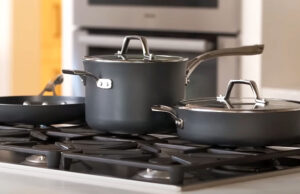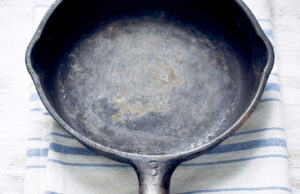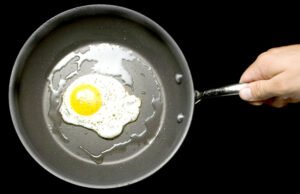As an Amazon Associate, I earn from qualifying purchases at no extra cost to you.
Is Pyrex Dishwasher Safe? Discover the Truth
You love cooking and using your favorite Pyrex dishes every day. You wonder if it’s safe to put them in the dishwasher. In this article, you will see the honest answer: yes, most modern Pyrex glassware is dishwasher safe—but with smart care tips to keep it looking new. You’ll also learn when to avoid the dishwasher and how to make your Pyrex last for a long time.
How Pyrex Is Made and What Makes It Dishwasher-Friendly
Pyrex started in 1915 as a strong glass made to handle heat and cool fast. Over the years, the company changed its formula. Older Pyrex was made with borosilicate glass. This glass could take big temperature jumps without cracking. In the late 1990s, most Pyrex in the U.S. switched to tempered soda‑lime glass. This type is also tough and works well in dishwashers, but it handles quick temperature changes differently than the borosilicate version.
When you put modern Pyrex in the dishwasher, it sees warm water, soap, and the heating action. Soda‑lime tempered glass is designed to stand up to that. It can go in dishwashers, microwaves, ovens, and freezers safely. But always check the bottom of your dish. If it says “dishwasher safe” or shows a dishwasher icon, you’re good. If it doesn’t, you may want to wash it by hand to be safe.
Dishwasher heat and detergent can dull the shiny finish over time. They can also leave stains on lids, especially plastic lids. If you notice your lids looking foggy or wearing out, your dishwasher may be too hot. Let the lids air dry to protect them.
By knowing what kind of glass your Pyrex is, how the dishwasher works, and how fast changes in temperature happen, you can keep your dish looking clear and fresh for many years.
- Modern Pyrex is made with soda‑lime tempered glass, which is dishwasher safe.
- Look for dishwasher‑safe labeling on the bottom of your dish.
- Avoid putting old borosilicate Pyrex or unlabeled pieces in the dishwasher.
- Hot dishwasher water and detergent can dull glass over time.
- Plastic lids may cloud or wear; hand‑washing helps extend their life.
Care Tips to Prolong Pyrex in the Dishwasher
Even though it’s okay to wash Pyrex in the dishwasher, you still want it looking perfect every time. First, separate glass dishes and lids. Glass handles heat fine, but plastic lids might warp or look cloudy if you use the top‑rack heat. If a lid shows signs of distress, wash it by hand gently in warm, soapy water.
Choose a mild dishwasher detergent. Strong ones with bleach or acidic scrubs can wear down glass and damage lids. They may also leave hard‑to‑rinse residue, making a cloudy look. Using a gentle, eco‑friendly detergent prevents that buildup nicely.
Set your dishwasher to a normal or eco cycle. Skip the high heat or sanitizing cycles. These wash settings use hotter water that can stress your glass. A gentler cycle keeps everything safe. Also, make sure there’s space between pieces so water and soap circulate, helping everything dry fully and avoid spots.
When the cycle ends, open the door slightly and let steam escape. This lets the dishes cool slowly, so it’s less likely to crack or pop in the lid. If your dishwasher has a drying cycle, skip it. Instead, let dishes dry on a rack or in a towel‑lined sink.
If your Pyrex gets cloudy, soak it in a warm mix of water with baking soda or vinegar. Use a soft cloth to wipe stains gently. Rinse well and hand‑dry for a clear, shining finish.
- Separate plastic lids from glass—hand‑wash lids when needed
- Use mild, non‑bleach dishwasher detergent
- Select normal or eco cycle, not high‑heat or sanitizing
- Leave space between dishes
- Let dishes cool slowly, skip high‑heat drying
- Remove cloudiness with baking soda or vinegar soak
When to Skip the Dishwasher and Hand-Wash Instead
You want your Pyrex dishes to shine for years, so sometimes the dishwasher isn’t the best choice. If your piece doesn’t say “dishwasher safe” or if it looks unmarked, hand‑washing is best to keep it safe. Older Pyrex—especially made before the late 1990s—is borosilicate glass and more brittle when cooled fast or hit with stress. These older dishes are fragile in the dishwasher.
Sunset discoloration or etching can happen on printed or decorated Pyrex. When you put these in the dishwasher, the hot water and detergent gradually wear the paint or decorations. Hand‑wash them in lukewarm water with a soft sponge and mild soap. You’ll protect the look and keep them colorful.
When your Pyrex has stuck‑on food or stubborn stains, hand‑washing is the easier route. Use warm water and soak before scrubbing gently. You avoid damage from hard water or concentrated detergent. This also helps lids avoid warping from heat.
If your Pyrex has cracks, chips, or damage, it’s not safe for dishwashers—or ovens. Heat or pressure from the dishwasher can worsen cracks and cause breakage. Dispose of or recycle damaged glass safely.
- Avoid dishwasher for unmarked or vintage Pyrex (pre‑late 1990s)
- Hand‑wash decorated or painted pieces to keep designs
- Soak stuck‑on food before washing
- Check for cracks or chips; discard unsafe items
Safe Temperature Changes and Preventing Thermal Shock
Pyrex is famous for taking temperature well, but sudden temperature changes can still cause cracking. Thermal shock, when hot glass meets cold water or vice versa, can lead to breakage. In the dishwasher, glass might go from hot wash to cold rinse too fast. You can avoid that.
Always let Pyrex cool before washing. Don’t take it from oven or microwave and immediately put it in the dishwasher or under cold water. Let it sit until it’s room temperature. This avoids stress.
Load Pyrex on the bottom rack or sidewalls, not touching the heating element or spray arms. This keeps it out of direct heat or strong water jets. Give enough space between pieces so water sprays evenly around each dish.
If you worry about a wash cycle that cools it fast at end, skip the heated dry cycle. Let Pyrex cool off inside the dishwasher after the final rinse. Then open the door a bit and let it finish cooling before taking it out.
If you drop a dish’s temperature too fast and see micro‑cracks, don’t use it in the oven. Even small cracks can become big ones when heated again.
- Let Pyrex cool fully before washing
- Load away from heating elements and strong water jets
- Skip heated dry; let dishes finish cooling inside dishwasher
- Inspect for micro‑cracks and discard damaged items
How to Clean Stains, Cloudiness, and Maintain Clarity
Even dishwasher‑safe Pyrex can lose that clear shine over time. Hard water, detergent residue, and heat can fog the glass. Keep your collection looking great with simple home care.
If your Pyrex looks cloudy, fill it with hot water, a tablespoon of baking soda, and a teaspoon of dish soap. Soak one to two hours. Then wipe softly with a cloth. Rinse well and dry. Baking soda naturally removes buildup without scratching.
For greasy or stained dishes, pour in white vinegar and hot water. Let it soak and swirl around. Rinse carefully, dry with a soft towel. If labels or stickers left a mark, use a dab of olive oil on a cloth to lift it away gently.
A paste from equal parts baking soda and water works well on stubborn food bits. Apply, wait 10 minutes, scrub gently, rinse clean, and dry. Repeat weekly if you use Pyrex a lot.
Always dry your dishes by hand with a soft towel. Air-drying alone may leave spots from minerals in tap water. A gentle hand-dry keeps that crystal finish.
- Soak cloudy dishes in hot water, baking soda, dish soap
- Use vinegar soak for greasy or stained dishes
- Apply baking soda paste for tough stuck‑on food
- Remove sticker residue with olive oil on cloth
- Hand‑dry with soft towel for clarity
Lids, Seals, and Extras: Dishwasher Dos and Don’ts
Pyrex containers with lids are super handy for storing and reheating. But lids—usually plastic or silicone—need special care. Many are dishwasher safe on the top rack, but check the symbol. If your plastic lid only says “hand-wash,” don’t risk it in the machine.
Even dishwasher-approved lids can warp on hot cycles. Place them on the top rack, flat, away from heating elements. Let them air dry or towel-dry gently. Don’t stack heavy dishes on top of them or use heated drying cycle.
Silicone lids are flexible but heat-sensitive. They can handle moderate dishwasher heat on top rack. But the high‑heat or sanitizing cycles might warp them. If you see warping, hand‑wash instead.
Rubber seals or gaskets should be taken out and washed by hand. Hot heat might distort them and affect the seal. Keep them clean and dry before putting lids back on.
Keep extra seals clean and dry in a bag. If stains build up, soak them in warm soapy water for a few minutes, rinse, and air dry. Check seals frequently for wear, cracks, or stickiness. Replace them when needed to keep freshness.
- Only dishwasher lids with the correct symbol go on top rack
- Avoid high-heat or sanitizing dishwasher cycles for lids
- Hand-wash rubber seals and gaskets separately
- Air-dry or towel-dry all parts gently
- Inspect seals and replace when worn
Eco-Friendly and Cost-Saving Ways to Care for Pyrex
Using Pyrex helps you cook and store food without plastic waste. With simple habits, you improve your kitchen’s eco impact and save money. When you wash dishes right, you avoid buying glassware often.
Choose eco‑friendly dishwasher pods or mild detergent. These clean well and are kinder to the glass and environment. When your dishwasher is full, run an eco or normal cycle. This saves water and energy.
Instead of heating full dishwasher heat, skip heated dry and let dishes air-dry. This cuts electric use and helps Pyrex last longer. You’ll also avoid replacing fogged lids or stained dishes.
Got leftover food? Soak the dish in warm water before the wash. Kitchen safe soaking means less scrubbing and longer lifespan. It also saves detergent because the dishwasher doesn’t need extra soap to get away grime.
If a dish breaks or cracks, don’t toss it in the trash. Many recycling centers take tempered glass. If yours doesn’t, turn a cracked Pyrex into a planter, pen holder, or food scoop. You save waste and add style to your home.
- Use eco‑friendly dishwasher detergent
- Operate dishwasher only when full on gentle cycles
- Avoid heated dry; air‑dry instead
- Pre‑soak dishes to save detergent and scrubbing
- Recycle or repurpose broken glass to cut waste
Final Thoughts
By learning how to care for your Pyrex—especially using the dishwasher safely—you can keep it sparkling and lasting for many years. With smart habits like cooling before washing, using mild detergent, and hand‑washing lids, you protect your investment without stress. You’ll save time, money, and reduce waste—all while enjoying your favorite dishes every day.
Frequently Asked Questions (FAQs)
Is it safe to put vintage Pyrex in the dishwasher?
Vintage Pyrex made before the late 1990s is often borosilicate glass or has painted designs. It’s best to hand-wash these pieces in warm, gentle water. Dishwashers—with hot water and strong detergent—can damage their finish, dull colors, or cause thermal stress. Treated with care, these pieces remain beautiful and usable for years.
Can I use bleach-based dishwasher pods with my Pyrex?
Bleach-based pods clean effectively but can wear away finish over time and leave cloudy stains on glass. They may also dull decorated lids. Instead, use mild or eco-friendly detergent. These keep Pyrex clear and protect plastic or silicone parts.
Do I have to check the dishwasher safe label every time?
Yes, always check for the dishwasher-safe symbol or note on each piece. Pyrex may include glass casseroles, lids, or extra cookware that vary in treatment. Label tells you if the item can handle dishwasher cycles. When in doubt, hand-wash to avoid damage.
Is it okay to air-dry Pyrex after dishwasher cycle?
Yes, air-drying is safe and eco-friendly. After the rinse, open the dishwasher door slightly and let dishes cool and dry naturally. This avoids high-heat drying that can stress lids or dull glass surfaces. Afterward, towel-dry lightly to remove water spots.
Can rapid temperature changes cause my Pyrex to crack in the dishwasher?
Rapid cooling or heating—called thermal shock—can stress glass. Putting hot Pyrex in a cooler rinse or cold air can cause micro-cracks. To avoid this, allow it to cool to room temperature before washing, and skip heated drying cycles.
Do I need to replace Pyrex lids if they get foggy?
Not always. You can soak lids in warm, soapy water and gently scrub them to remove cloudiness. If they stay cloudy or begin to warp, it’s time to replace them. Clear lids protect freshness and tight seals.
Is it better to hand-wash lids separately?
Yes. Plastic and silicone lids can warp in dishwashers, especially on high heat. Hand-washing in warm water with mild soap protects their shape, seals, and clarity. Air-drying prevents moisture buildup and extends life.
Do I save money by caring well for my Pyrex?
Definitely. By washing gently, avoiding harsh cycles, and repairing rather than replacing lids, you keep your dishes longer. This cuts down on buying new glassware and reduces kitchen waste. Simple steps help you save money and the planet.




